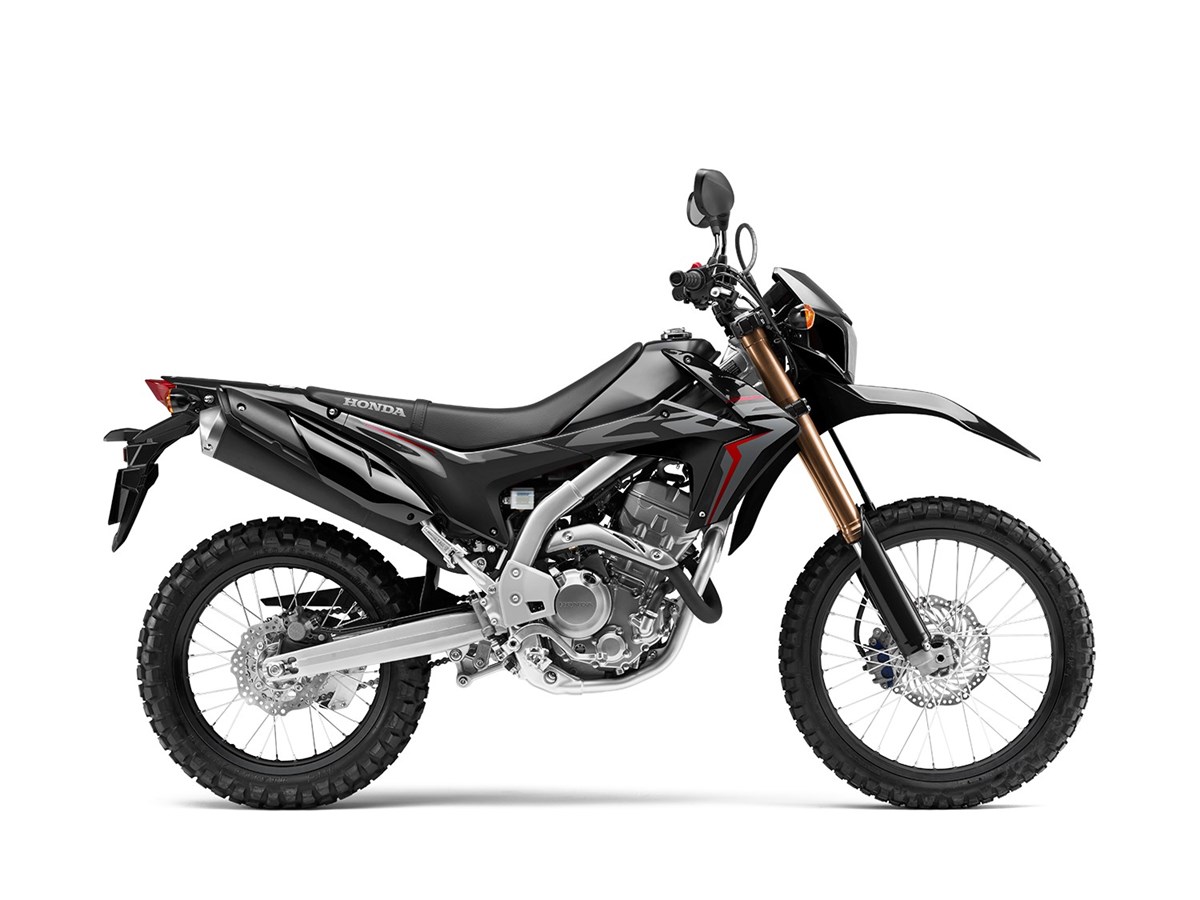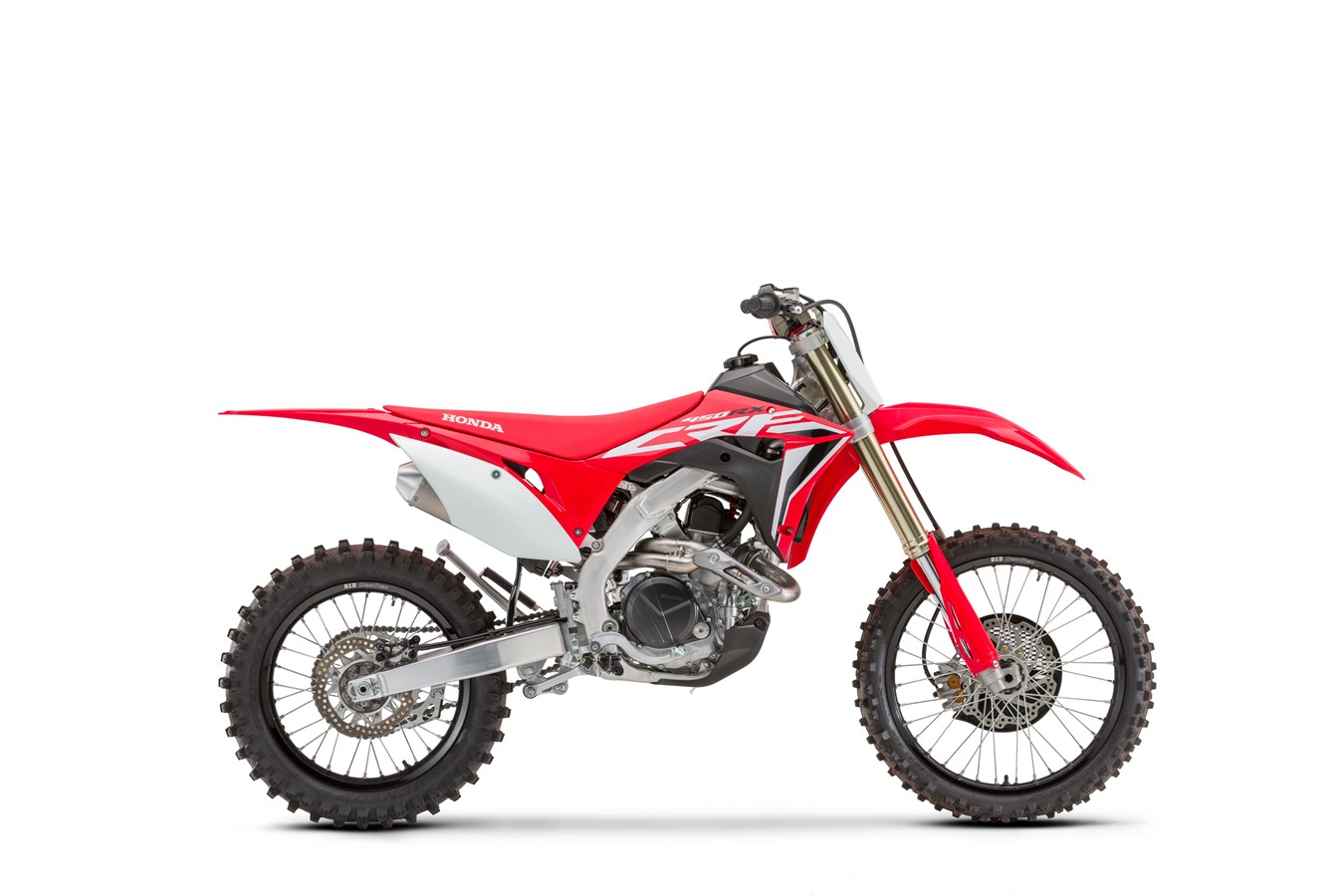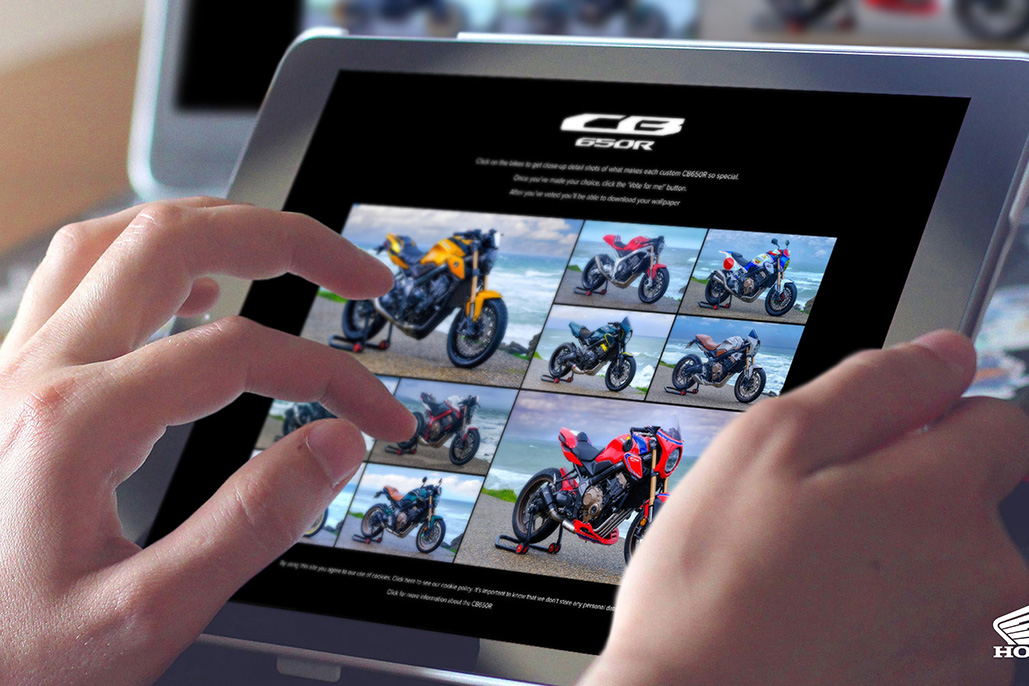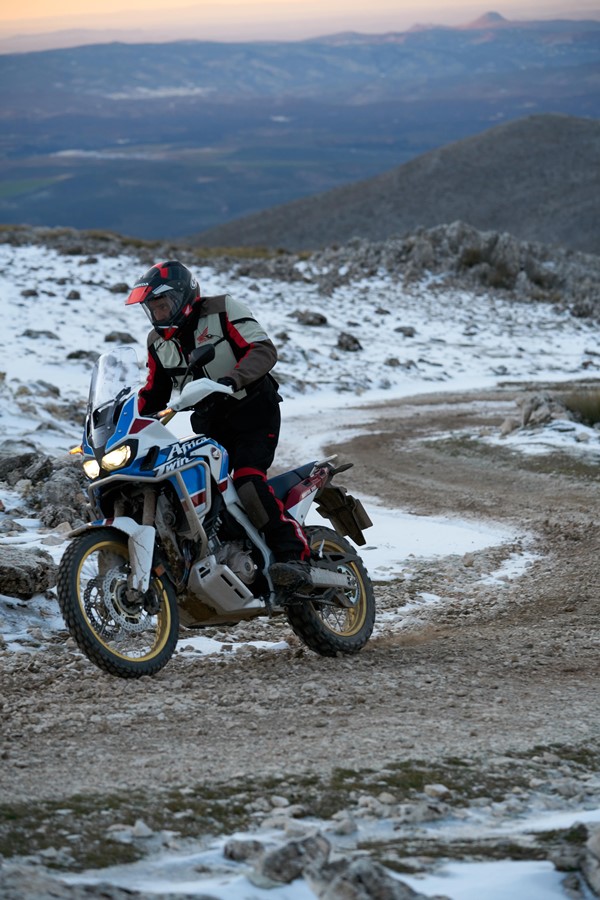20YM HONDA CRF450L

20YM HONDA CRF450L
Using the CRF450R moto-crosser as a base, Honda’s road-legal dual-purpose motorcycle has a tough, lightweight chassis built to find all the available grip, powered by an engine that delivers strong, usable power right from the bottom. Durable, high quality parts and long service intervals aim for a worry-free riding and ownership experience. Striking new graphics enhance the CRF450L’s look for 2019.
1. Introduction
A true dual-purpose motorcycle should be many things. Off-road it needs to be light weight, with quality suspension and handling ability that keeps life easy as the going gets harder. Its engine has to make good power and torque from the bottom up – the sort that is supremely usable, allowing the rider to find all the rear wheel grip possible, whatever the terrain.
All the attributes that make it great fun off-road also enable it to be really useful around town; narrow and nimble, a dual-purpose machine slips through gaps, soaks up the hits from rough roads and stays well ahead of traffic thanks to smart, low-gear acceleration. It also needs to be turn-key reliable, with sensible intervals between major service work.
Competition machines can make a solid base for dual-purpose adaptation. But there is much to consider. Race-level performance brings with it an intensive maintenance schedule, which is simply too much for many ‘hobby’ trail riders, who just want to push a button and go – and keep on going, Furthermore, a barely-disguised race bike can mean crucial road-going elements – lights, indicators, ignition switch – are not as user-friendly and durable as they should be.
Honda understands this, and with a desire to produce a dual-purpose bike that draws strongly on the fundamental performance of a race machine, yet with much more ‘normal’ service intervals and high-quality road ancillaries, in 2018, it took its CRF450R moto-crosser as a base to start from, and created the CRF450L.
It is unmistakably a race-bred CRF – and looks it – but with the additions and modifications needed to make it both road legal and supremely useable in a trail environment. As such, the CRF450L is a complete package, as happy roosting trails as it is linking them up on-road. And with Honda engineering and build quality at its core, is sure to do so for years to come.
2. Model Overview
The journey from full race to road legal trail was a detailed one for the CRF450L. Road legality required the engine to be omissions compliance, while from a longevity and usability viewpoint, the power output and character, needed careful attention.
It’s still a CRF450R; just one that’s quieter, both mechanically from the chassis and engine, as well as its new exhaust. Both fuelling and ignition maps are now managed by 02 lambda sensor; compression ratio has been lowered and crank mass increased for improved drivability. The gearbox is a 6-speed – for longer legs on the road.
The plastics are lifted directly from the CRF450R and all lighting is LED, with the front headlight in particular throwing out a penetrating beam. Increased volume for the titanium fuel tank adds range and all the items that make the CRF450L ready to purchase as a licensed, road going machine – such as speedometer and horn – are present as standard. For 20YM, new graphics further elevate the bike’s visual appeal.
3. Key Features
3.1 Engine
- Based on the CRF450R, with first major service at 32,000km
- EURO4 compliant, with electric start
- Greater crank inertia improves drivability and feel for traction
- 6-speed gearbox
While the chassis was more straightforward to convert from its CRF450R moto-crosser specification to a dual-purpose performance level, the 449cc engine needed more consideration from Honda’s engineers. Requirements were several: the need for it to pass EURO4 emissions and noise regulations, and to be usable for a wide variety of riders in many differing situations both on and off-road.
While the fundamental architecture of the four-valve Unicam powerplant remains the same, many details have been changed to support the broader role: the crank’s mass has been increased, resulting in 13% more inertia which, for a trail rider, equals improved torque feel and response; valve timing has been revised to give the broader, smoother spread of power and torque; the gearbox is now 6-speed, rather than 5 for longer range use on tarmac; left and right engine covers wear outer covers to reduce noise;
Elsewhere, the ACG has been uprated, to provide the required electrical power for the LED lights and to maintain battery charge during lower-speed running. The battery itself is a high-volume unit.
Bore and stroke are unchanged from the CRF450R, at 96mm x 62.1mm, but the piston uses 3 rings instead of 2 for greater durability. Compression ratio is 12.0:1 (compared 13.5:1). A redesigned airbox feeds the PGM-FI, managed by a lambda sensor in the large-volume single exhaust (which replaces the ‘stubby’ dual-pipe design of the CRF450R). An Air Injection (AI) system and catalyser clean up the spent gases.
The four-valve Unicam cylinder head features a finger rocker arm on the inlet valves; valve lift is 7.7mm with 6.7mm exhaust valve lift. Inlet valve diameter is 38mm. The valve springs are oval in cross section and valve angle is 9° intake/10.5° exhaust.
The clutch spins 7 friction discs with a 2mm clutch plate efficiently dissipating heat; the springs generate a good, consistent connection. The front sprocket is a 13T, the rear 51T.
Peak power is 18.4kW, with peak torque of 32Nm. Important from the hobby trail-rider’s perspective is the engine’s reliability and gap between service intervals. And this is where the CRF450L’s build quality and design really stands out; it will go 32,000km between major strip downs, with an air filter oil and oil filter change every 1000km.
3.2 Chassis
- Drawn from the CRF450R, with minor adaptations for its dual purpose role
- Full LED lighting, increased fuel tank volume and sidestand
- Larger radiator volume, plus electric fan
- Styling closely mirrors that of CRF450R, with new graphics for 2019
Having received a ground-up redesign in 2016, the CRF450R’s chassis was a perfect place for the CRF450L to start out from, with changes to match the machine’s vastly broader usage range, and road legal mission.
Firstly, the tapered dual-spar aluminium beam frame was made slightly wider at the swingarm pivot points, to allow for the greater engine width resulting from the 6-speed gearbox. The headstock was modified to mount a steering lock and the aluminium swingarm injected with urethane to reduce noise. The rear subframe is the same, with mounting point adjusted to take the taillight and the right-exit single exhaust muffler.
Rake and trail are set at 28.5°/122mm with wheelbase increased 18mm from the CRF450R to 1500mm, for greater stability. Both the R and the L feature 22mm fork offset. Wet weight is 130.8kg; seat height is 940mm.
A 49mm Showa steel-sprung USD fork – adjustable for preload plus compression damping – is matched by a fully adjustable Showa rear shock, operated through Pro-Link. A 260mm wave-pattern disc delivers effective heat dissipation, power and feel from the two-piston brake caliper working it; a matching 240mm wave-pattern disc and single-piston caliper is at the rear.
Whereas the CRF450R machine uses a 19-inch rear wheel, the CRF450L’s is an 18-inch (to fit enduro-spec tyres); a sealed 520 chain is protected by a plastic chain guard. The front wheel is a 21-inch and both rims are finished in black. Tyres are sized 80/100-21 front and 120/80-18 rear.
Enhanced with striking new graphics for 2019, the CRF450L’s overall style draws fully on that of the CRF450R. Carried over are the rear mudguard, side panels and bash plate. Svelte side shrouds hide a larger radiator volume plus electric fan. All lighting (including the indicators and license-plate light) is LED; a speedometer, horn, brake-light switch and mirrors satisfy legal requirements while a sidestand adds convenience. The CRF450R employs a 6.3L titanium fuel tank; the CRF450L ups the volume 1.3L to 7.6L. The fuel cap also locks in place.
4. Technical Specifications
| ENGINE | |
| Type | Liquid-cooled 4-stroke single cylinder uni-cam |
| Displacement | 449cc |
| Bore and Stroke | 96.0mm x 62.1mm |
| Compression Ratio | 12.0:1 |
| FUEL SYSTEM | |
| Carburation | PGM-FI Fuel injection |
| Fuel Tank Capacity | 7.6 litres |
| ELECTRICAL SYSTEM | |
| Ignition | Digital CDI |
| Starter | Electric |
| DRIVETRAIN | |
| Clutch Type | Wet multiplate |
| Transmission Type | Chain |
| Final Drive | Chain |
| FRAME | |
| Type | Aluminium twin tube |
| CHASSIS | |
| Dimensions (L´W´H) | 2,280mm x 825mm x 1,260mm |
| Wheelbase | 1500mm |
| Caster Angle | 28.5° |
| Trail | 122mm |
| Seat Height | 940mm |
| Ground Clearance | 315mm |
| Kerb Weight | 130.8kg |
| SUSPENSION | |
| Type Front | 49mm Showa steel-sprung USD fork |
| Type Rear | Showa monoshock using Honda Pro-Link system |
| WHEELS | |
| Type Front | Aluminium spoke |
| Type Rear | Aluminium spoke |
| Tyres Front | 80/100-21 |
| Tyres Rear | 120/80-18 |
| BRAKES | |
| Front | Single Disk |
| Rear | Single Disk |
All specifications are provisional and subject to change without notice.














